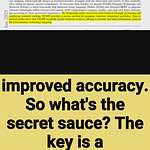Task decomposition Agentic frameworks that converts user queries into optimized task graphs while managing tool dependencies
📚 https://arxiv.org/abs/2410.22457
🤖 Original Problem:
LLM-based systems face limitations in industrial settings due to costly fine-tuning requirements and challenges in real-time decision making. Current agentic frameworks lack comprehensive evaluation methods and suffer from high latency, limited adaptability, and insufficient dynamic tool integration support.
-----
🔧 Solution in this Paper:
→ Introduces a framework with 5 core components: Orchestrator (generates task graphs), Delegator (manages task distribution), Agents (execute tasks using LLMs), Tools (provide functions), and Executor (handles execution sequence)
→ Proposes novel evaluation metrics: Node F1 Score, Structural Similarity Index (SSI), and Tool F1 Score
→ Develops specialized dataset based on AsyncHow dataset for analyzing agentic behavior
→ Implements Task-Aware Semantic Tool Filtering for real-time tool selection
-----
💡 Key Insights:
→ Task graph decomposition strategies (coarse vs fine-grained) significantly impact system efficiency
→ Structural metrics are more critical in sequential tasks, while tool-related metrics dominate parallel tasks
→ SSI emerged as strongest predictor of performance in sequential tasks (r=0.470, p<0.001)
→ Tool F1 Score proved essential in parallel tasks (r=0.476, p<0.001)
-----
📊 Results:
→ Model achieved R-squared value of 0.3631 for sequential tasks, explaining 36.31% variance
→ For parallel tasks, R-squared value reached 0.3933, explaining 39.33% variance
→ Node Label Similarity showed substantial correlation (r=0.447, p<0.01)
→ System demonstrated high Node Precision/Recall but lower Edge F1 Scores in complex dependencies










